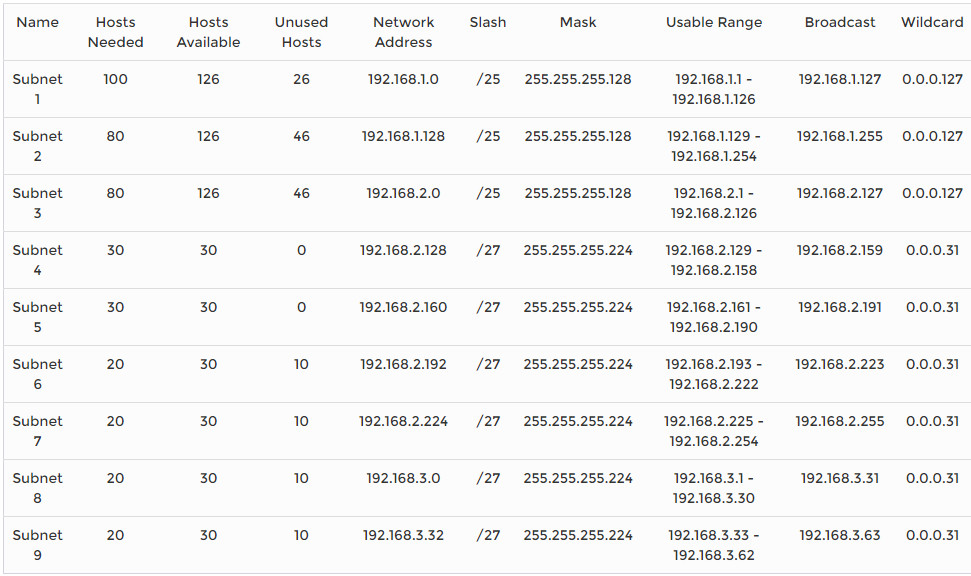Question:
A network administrator is designing an IPv4 addressing scheme and requires these subnets.
1 subnet of 100 hosts
2 subnets of 80 hosts
2 subnets of 30 hosts
4 subnets of 20 hosts
Which combination of subnets and masks will provide the best addressing plan for these requirements?
- 9 subnets of 126 hosts with a 255.255.255.128 mask
- 3 subnets of 126 hosts with a 255.255.255.192 mask
6 subnets of 30 hosts with a 255.255.255.240 mask - 3 subnets of 126 hosts with a 255.255.255.128 mask
6 subnets of 30 hosts with a 255.255.255.224 mask - 1 subnet of 126 hosts with a 255.255.255.192 mask
2 subnets of 80 hosts with a 255.255.255.224 mask
6 subnets of 30 hosts with a 255.255.255.240 mask
Explanation: VLSM Calculator Online

IPv4 subnets that require 100 and 80 hosts are provided by creating subnets of 126 usable addresses, each of which requires 7 host bits. The resulting mask is 255.255.255.128.
Subnets that require 30 and 20 hosts are provided by creating subnets of 30 usable addresses, each of which requires 5 host bits. The resulting mask is 255.255.255.224.
Creating nine subnets, each consisting of 126 usable addresses, would waste large numbers of addresses in the six smaller subnets.
Exam with this question: CCNA 2 v6.0 - CCENT (ICND1) Practice Certification Exam
Exam with this question: CCNA 200-301 Certification Practice Exam Answers
Please login or Register to submit your answer
